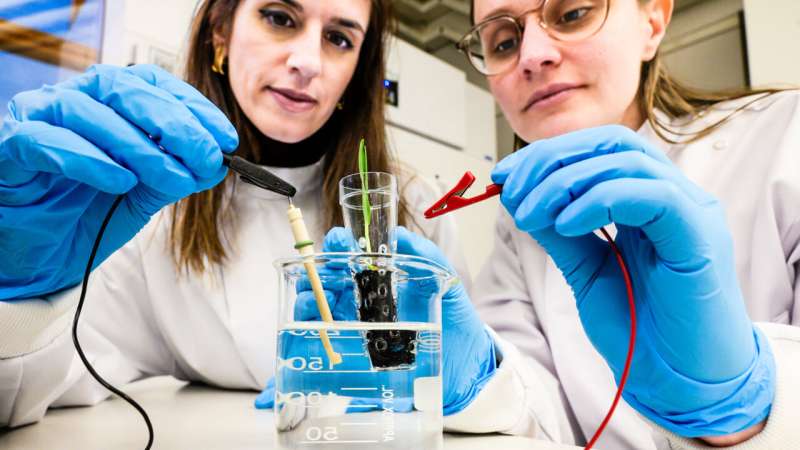Newly Invented 'Electronic Soil' Enhances Crop Growth, Scientists Report

25 December 2023
The following article has undergone rigorous review based on the editorial process and policies of Science X. The editors have emphasized the following key aspects to guarantee the trustworthiness and accuracy of the content:
- Fact-checked
- From a reputable source
- Proofread thoroughly
Quality assured by Linköping University
A study published in the journal PNAS reveals that barley seedlings have shown an average growth increase of 50% when their roots are electrically stimulated with a new cultivation medium. The research was conducted by scientists from Linköping University who designed an electrically conductive growing medium for soilless cultivation or hydroponics.
Associate professor at the Laboratory of Organic Electronics at Linköping University, Eleni Stavrinidou, highlights that the rapidly increasing world population and climate change necessitate the adoption of novel agricultural methods like hydroponics. Hydroponics allows food cultivation in highly controlled environments, even in urban settings.
The research team led by Stavrinidou has recently designed an electrically conductive hydroponics substrate named eSoil. It was observed that barley seedlings grown in eSoil and subjected to electric stimulation exhibited a growth spurt of up to 50% in 15 days.
In hydroponics, plants are grown without soil, relying only on water, nutrients, and a substrate for root attachment. Its closed system configuration allows water and nutrient recirculation, ensuring that each seedling receives the exact nutrients it needs. Hydroponics also facilitates vertical cultivation in tall towers for optimal space utilization. Currently, this method is used to grow lettuce, herbs, some vegetables, and grains for fodder. The researchers showed, however, that barley seedlings can also be cultivated hydroponically, made more productive with electrical stimulation.
Stavrinidou explains that, although the biological mechanisms behind the increased productivity are still unclear, it was observed that the seedlings process nitrogen more efficiently in the presence of electrical stimulation.
Hydroponics usually employs mineral wool as a substrate. However, mineral wool is not biodegradable and its production is highly energy-consuming. The newly developed eSoil, in contrast, is made of abundant biopolymer cellulose, mixed with a conductive polymer named PEDOT. Despite not being a new combination, it is the first time that these materials are used for plant cultivation to establish plant interfaces.
The unique selling point of their 'soil', as per Stavrinidou, is its low-energy consumption and absence of high voltage danger. She is hopeful that this study will open up new avenues for further research in improving hydroponic cultivation.
She emphasizes, however, that hydroponics alone cannot solve food security issues. But, it has a significant role to play, especially in regions with minimal arable land and challenging environmental conditions.
Provided by Linköping University




